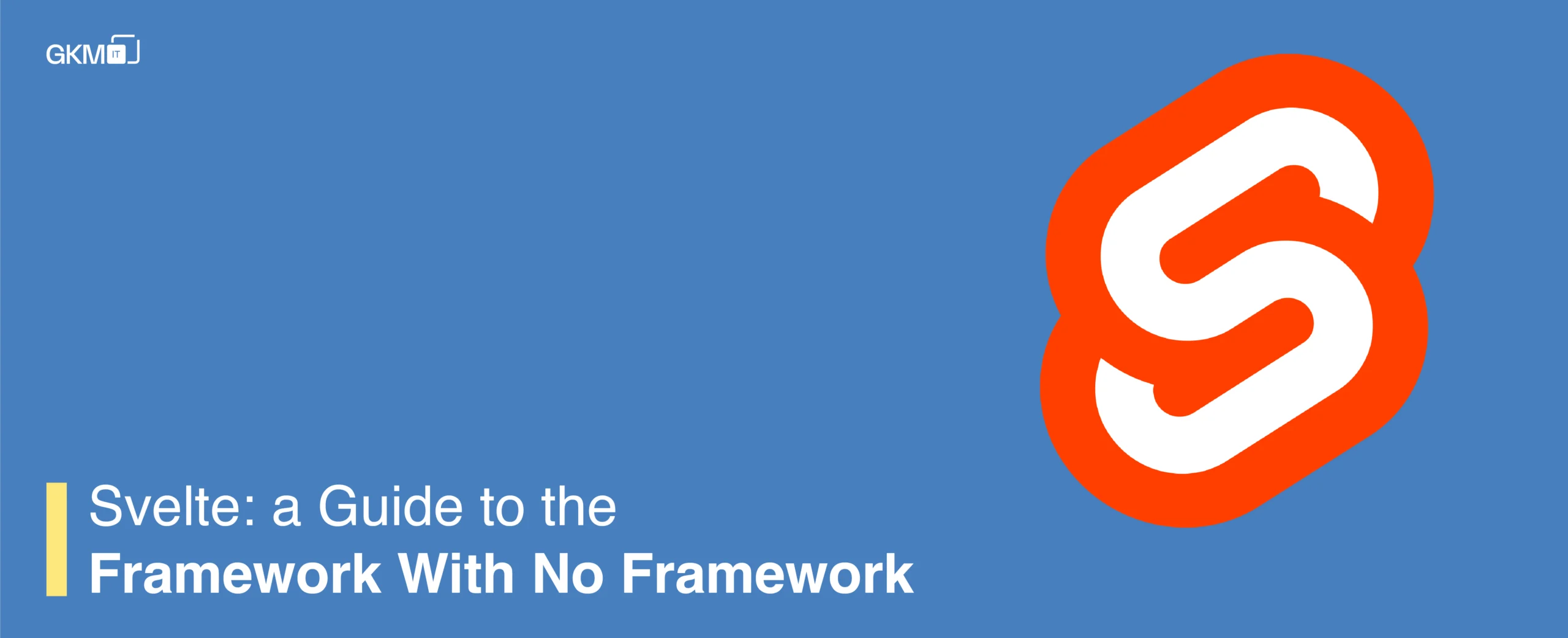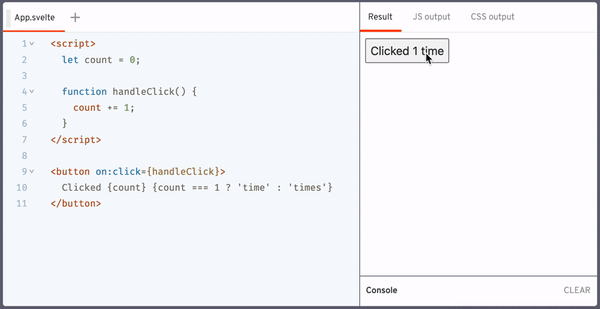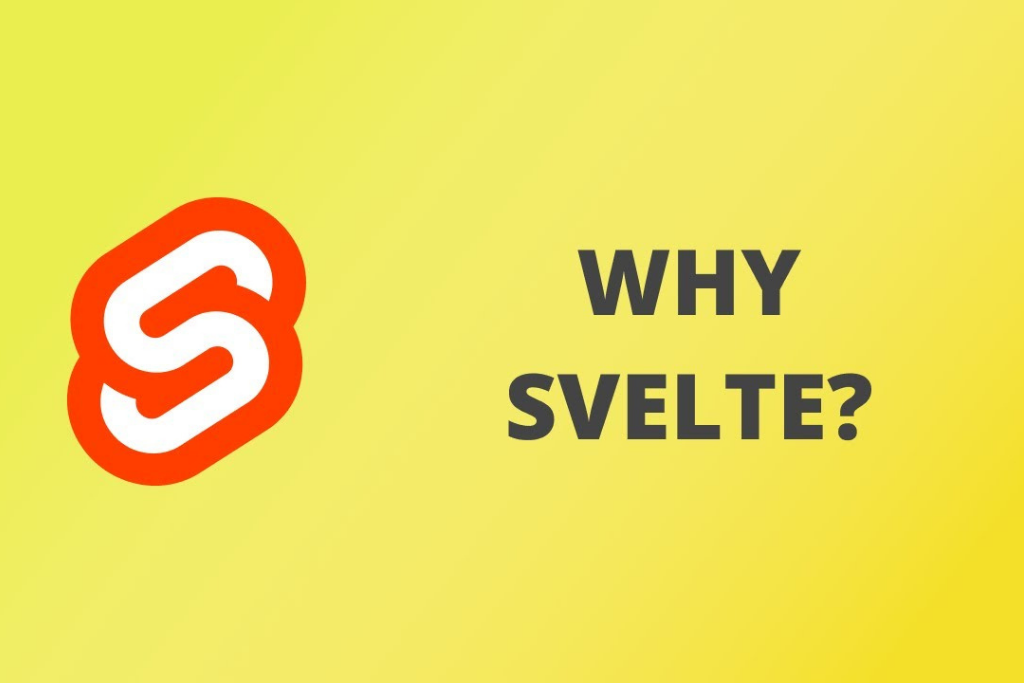
Svelte: A Guide to the Framework With No Framework
The Developer world is rich with a wise collection of work and web frameworks. The list is growing and evolving at a fast pace.
The frameworks are like Angular, Vue, React, Ember, Preact, Mithril and many more with wonderful work experience for developers. Some are ‘less good’ and some are just ‘the best’.
To give tough competition to these awesome frameworks, recently a new JavaScript framework has come into the light named Svelte.
Though Svelte originally came in 2016, it is still considered “new”. We analyzed the big difference when the last version – Svelte 3 came into existence earlier in 2020. It caught the attention of the developer community.
Let’s check what makes Svelte talk of the town and about its new approach of building reactive user interfaces.

What is Svelte?
It is hard to answer the question as even the creator Rich Harris is quite skeptical about the nature and behavior of Svelte. At first, he made us believe it is a UI framework like others. But in his recent declaration, he expressed: that he did not even realize what Svelte was until the release of the 3rd version.
Let’s hear what Harris has to say-
“I had you believe that Svelte was a UI framework — unlike React and Vue, etc. because it shifts work out of the client and into the compiler, but a framework nonetheless. But with Svelte 3 around the corner, it’s time to come clean about what Svelte really is. Svelte is a LANGUAGE. Specifically, it is an attempt to answer this question: what would it look like if we had a language for describing reactive user interfaces?”
To simplify the term, we can say Svelte is a component-based JavaScript reactive user-interface framework implemented in TypeScript.
This entirely different framework holds the power to surprise you and of course, this is a big statement after using React, Vue, Angular and other wonderful frameworks.
A framework with no framework- Svelte framework meaning
The framework makes code easily manageable discards all the finicky implementation and moves the complexity of the code by using the virtual DOM diffing technique.
What makes the React.JS framework powerful is it helps manage the complexity of thoughts and concepts, not the code.
Svelte compiles the component into an ideal JavaScript module during build time when a developer writes using CSS, HTML, and JavaScript. Thus, it is also known as a ‘framework without framework’.
This makes Svelte really fast, more than React.js and even faster than Vue.js, Angular.js and as fast as Vanilla.js itself. It gives close competition to Inferno.js the fastest UI framework in the entire world.
There are a few limitations that we will explain in a later section of the blog.
Svelte versions and their journey
Svelte came into existence in the year 2016 with the very first version. V1 was an approach to test a hypothesis – a purpose-built compiler could generate rock-solid code, which delivers a great user experience.
Version 2 was another upgraded feature and stirred up things a little bit but it did not receive much attention. But the release of version 3 grabbed a lot of attention and significant reaction.
After version 2 the Svelte team worked hard on developing version 3 and tried every means to make it grand and trust us they succeeded in it. Outstanding performance, ease of use, small bundles, compiling, cybernetically enhanced apps upgraded intelligent extensions are a few features to name in Svelte 3.
What makes Svelte shine?
The regular framework only helps you write declarative state-driven code, but Svelte does extra hard work using the virtual DOM filing technique and changes the declarative code into DOM operations. This wastes time and money.
Virtual DOM was assumed to make the framework work faster and later it became debatable as to how Svelte manages to be faster without using virtual DOM.
What exactly is the Svelte framework?

It is less of a framework and more of a tool that compiles the code component at the build time. It lets you load a single bundle.js file to render applications, which means no virtual DOM, no framework to load at runtime, and faster speed.
As compared to other web frameworks, Svelte creates applications with smaller bundle sizes.
The words of Jeff Delaney, creator of AngularFirebase.com, about SvelteJS, are quoted as follows-
“I can confidently say that Svelte has been the easiest JavaScript component library to learn and start putting to use productively.”
Pros & Cons
“ Let’s have a look at the advantages and disadvantages of Svelte
Pros –
- Less code, more work
- No virtual DOM
- Built-in style encapsulation
- Declarative transitions
- Code compilation at build-time
- Faster speed and outstanding performance
- CSS-in-JS library
- Reactive components
- Effective code splitting
- Small application bundle size
- Typescript-support
Svelte lacks important functionality, though it has impeccable features. It is not completely ready for production.
Cons –
- Snail-like at removing elements
- Post-compilation, it has no DevTools to debug applications
- Incomplete third-party component libraries
The Svelte team is working hard on cons, and thus we can expect another big release soon. Let’s wait for more uplifting features and fewer flaws.
Wrapping up:
It doesn’t matter what type of software you really want to build, Svelte overwhelms you with its out-of-box functionalities and extraordinary features. It is faster than other frameworks or we can say “fastest existing JS framework”.
However, Svelte have miles to go as new experiments and updates are going on for the new version. React and other frameworks are at the peak and, of course, it cannot surpass the framework but surely can give alternatives for the time being.
Consult the GKMIT team if you are looking for an organization to get your project accomplished in the best possible time and terms in the whole market.
Thanks for your valuable time!
Related Blogs:
Mean Vs Mern Stack Who Will Win The War In 2025
AI Writing Poems Building LSTM Model Using Pytorch
Flask Zero To Hero In 15 Minute
Is Custom Web Application Development The Right Choice For Your Business